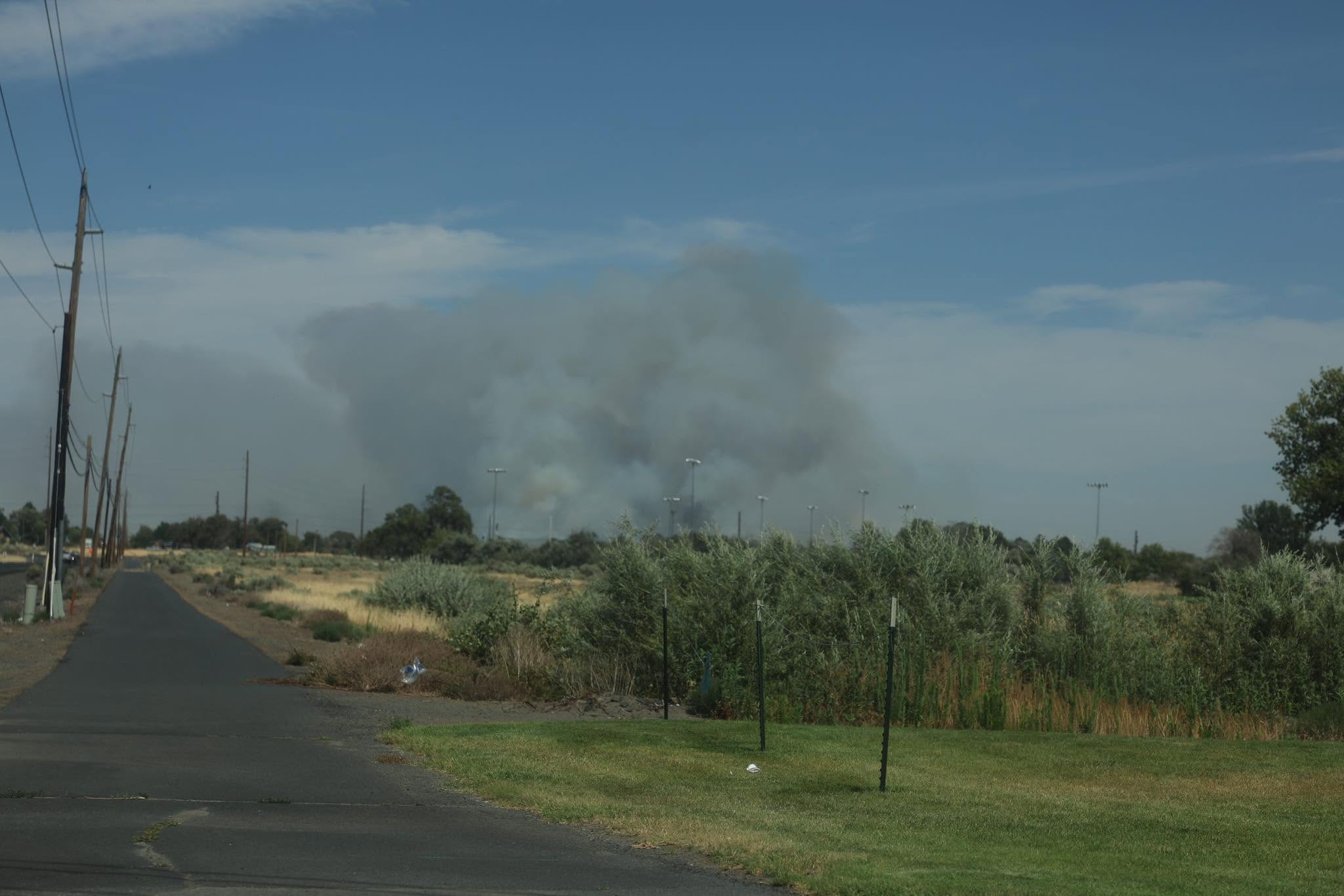Omicron variant found in Oregon as COVID-19 cases rise nationwide
Published 3:15 pm Monday, December 13, 2021

- Nurses in the St. Charles Bend intensive care unit treat a COVID-19 patient May 27, 2021.
The omicron variant of COVID-19 has been confirmed for the first time in Oregon, the Oregon Health Authority announced late Monday.
Oregon Health & Science University’s laboratory detected the variant Monday in samples from two residents of Washington County and one from Multnomah County.
All were in their 20s and 30s and fully vaccinated. Two had traveled internationally, to Canada and Mexico, prior the onset of symptoms.
“We recognize this news is concerning to many people,” said Dr. Dean Sidelinger, OHA’s top epidemiologist, in a statement.
While watching for further developments, Sidelinger said the best action for now is to be vaccinated, including the third booster shot authorized for everyone age 16 and over.
“If history is our guide, we do know that even if a vaccine doesn’t target a specific variant, the strong immune response you get from being fully vaccinated can still be highly protective against severe disease from all COVID-19 variants,” Sidelinger said.
The report came as the United States surpassed 50 million total cases on Monday, according to the Johns Hopkins Coronavirus Resource Center.
The death toll in the United States is expected to pass 800,000 later this week.
Worldwide, there have been 5.3 million people killed by the virus, the center said.
Tuesday marks the one-year anniversary since the first COVID-19 vaccines were made publicly available in the United States.
New Years Eve will mark the two-year anniversary of the appearance of the COVID-19 virus in China at the end of 2019.
Omicron making inroads
The new omicron variant was discovered Nov. 11 in southern Africa. In just over a month, it has spread to 70 countries.
The delta variant has so far crowded out other variants since summer, when it swept across the United States. In Oregon, it sent cases soaring in early July, peaking in early September.
As recently as this week, OHA reported that 100% of recent cases in Oregon were linked to the delta variant.
Researchers at the University of Washington reported late Monday that the omicron variant was supplanting delta in an increasing number of cases in that state. A sample of positive tests from Dec. 8 showed 13% were of the omicron variant, up from 7% on Dec. 7 and 3% on Dec. 6.
Scientists around the world have come to no consensus yet on how contagious and virulent the new variant will be. Early studies indicate it is twice as contagious but of similar or lesser virulence.
The United Kingdom announced its first omicron-related death on Monday.
Delta variant driving national spike in new infections
Monday’s news of the three cases in Oregon came as the state was already bracing for a possible sixth wave of delta-driven infections spreading rapidly across the country.
Nationwide, new infections are up 49% compared to two weeks ago. Oregon is now among the 45 states to report a rise in cases compared to 14 days ago.
Oregon has seen an 18% jump in new cases compared to Nov. 29.
The discovery of the omicron variant in Oregon was not included in the initial daily OHA report on Monday.
The agency tallied a three-day total of 1,387 new COVID-19 cases and 39 new deaths. The report covered Friday, Saturday and Sunday. The discovery of the omicron cases in Oregon was announced in a statement released after 6 p.m.
The current national spike is being driven by the delta variant, according to the Centers for Disease Control on Monday.
Public health officials say winter cold and gatherings indoors are likely to blame for high case numbers, with New Hampshire, Rhode Island, Maine, Michigan, and Massachusetts reported 70 or more cases per 100,000 people on Monday. Minnesota reported 69.
Oregon was among 12 states that did not report an increase in hospitalizations compared to two weeks ago.
But the rise in cases is spreading beyond the original outbreaks in the northeast and upper Midwest. The New York Times Covid-19 tracking websites showed increases in the past two weeks included a 80% rise in Texas, 72% in Florida, 60% in Hawaii and 53% in California.
Forecasting frustrated by unknown omicron impact
The Oregon Health & Science University’s weekly forecast, last released Friday, had features some good news, but future concerns for the path of COVID-19 in the state.
“Case rates returned to pre-Thanksgiving levels, suggesting that Thanksgiving itself did not create a wave of infections,” the report said.
Monday’s OHA report showed 408 COVID-19 patients in Oregon hospitals, down two from Sunday. Hospitals had 106 intensive care unit beds occupied by COVID-19 patients, the same as Sunday.
OHSU forecasts early last month projected hospitalizations to fall under 200 COVID-19 patients per day by Feb. 1. That’s a key benchmark on the state’s rebound from the COVID-19 spike that began in July and peaked at just under 1,200 COVID-19 patients in hospitals each day at the beginning of September.
The current forecast delays reaching the 200-patient mark to Feb. 26. Hospitalizations aren’t expected to reach pre-July levels until the end of March.
But forecasting the future path of COVID-19 in Oregon could be upended by the omicron variant.
“Oregon should expect a wave of omicron infections in coming months,” the report said. “The variant appears to spread much more easily than previous forms of the coronavirus.”
Public health officials need to prepare for a worst case scenario, particularly the availability of hospital beds and intensive care unit spots, researchers warned.
“If the disease is severe, the impacts are enormous,” the report said. “But there are signals it may be more mild.”
Booster shots are now approved for everyone over age 16 and many health officials believe being “fully vaccinated” now means having received the third shot of Moderna or Pfizer vaccine, or second shot for those who originally were inoculated with the Johnson & Johnson single-shot vaccine.
OHSU said the ability of omicron to get through current vaccines is showing mixed evidence.
“Booster shots appear helpful, but the vaccinated population is also at risk of infection,” the report said.
A new OHSU forecast is due Thursday evening.
The Institute for Health Metrics and Evaluation at the University of Washington, a major COVID-19 forecaster used by federal and state agencies, is projecting the United States will most likely have 880,678 reported COVID-19 deaths by March 1, 2022. It projects Oregon will most likely have 6,434 deaths at that point.
The nonprofit Covid Act Now that has monitored infection and vaccination rates throughout the pandemic, rates Oregon as “High” for risk, the mid-point of its five tiered scale.
Jefferson, Yamhill, Umatilla, Malheur and Marion counties are rated as having high vulnerability, which takes into account vaccination and natural exposure rates.
Deschutes County is the only large county rated “very low” for vulnerability.
COVID-19 precautions flattening flu
While concerned about “fatigue” over COVID-19 safeguards, such as wearing masks indoors in public settings and continued social distancing, there is a key indicator that safeguards are working.
Similar to last year, OHSU reported dramatically lower incidence of flu compared to 2019.
Fourteen cases were reported so far this year, compared with 304 in a similar week two years ago. The OHSU researchers believe the safeguards in place for COVID-19, particularly widespread masking, have suppressed the flu.









